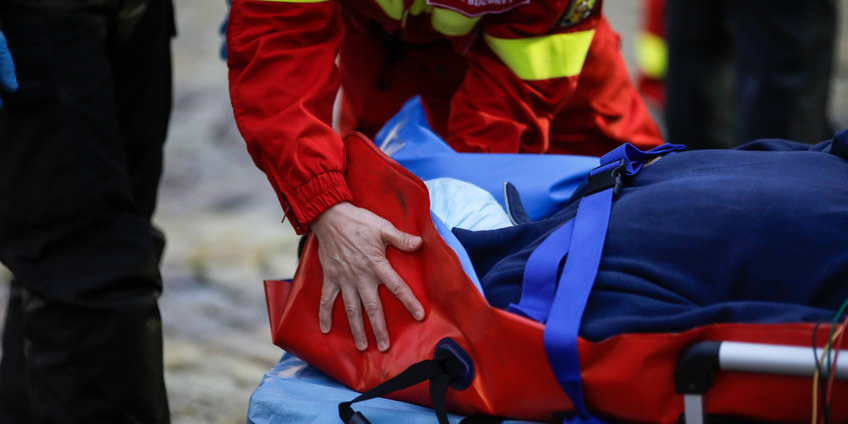
Oral and facial injuries are common in many emergencies and can be extremely dangerous, even if they seem minor in comparison with other ailments suffered by the patient. Maxillofacial injuries, for instance, are usually complicated by their proximity to the upper airway and cranial and cervical structures — this can lead to severe airway trauma in patients.
Understanding how to perform airway management and suctioning on patients with these injuries is an essential step in ensuring you’re able to treat patients safely and effectively, without inflicting additional trauma or pain on them.
The Effect of Maxillofacial Trauma and Oral Injuries on the Airway
Maxillofacial injuries, which are seen frequently in emergency departments, can range from common nasal fractures to damage to the orbital sockets. When a patient suffers maxillofacial trauma, their ability to oxygenate may be impacted in several ways, including by hypoventilation resulting from loss of ventilatory drive, from an obstruction of the upper or lower airways, or from decreased expansion of the lungs and hypoxia from decreased blood flow to the tissues.
There are many factors that can contribute to the compromise of a patient’s airway, including diminished consciousness, alcohol and/or drug intoxication, and altered laryngeal and pharyngeal reflexes. Given the severity of maxillofacial injuries and their impact on the airway, it’s critical that EMS personnel responding to these traumas are experienced and able to recognize airway obstruction, effectively suction the area, and perform a surgical airway at a moment’s notice.
Additionally, blunt or penetrating oral injuries can impact the airway in several severe ways, including:
- Decreasing the patient’s level of consciousness
- Causing hemorrhaging into oral/nasal cavities
- Causing broken teeth, which can lead to obstruction
- Contributing to a loss of airway patency from facial features
- Causing crushing injuries that impede airflow
Performing Suctioning on Patients with Maxillofacial Injuries
The “look, listen, and feel” strategy is a tried-and-true method for assessing the level of airway obstruction and complications in patients. When treating a patient with maxillofacial injuries, medical personnel must provide adequate oxygenation with uninterrupted saturation monitoring and protect the airway from blood and vomitus to prevent aspiration and other complications. There may be delayed airway compromise due to the displacement of tissue, bleeding, and swelling, but providers should always have a high-volume suction device ready, so they can clear the mouth and oropharynx from blood and other secretions when necessary.
Every treatment scenario is different, but providers’ airway management protocol for treating patients with maxillofacial trauma should remain as follows:
- Anticipate and recognize the airway obstruction
- Clear the airway, position the patient, and perform chin lift and jaw thrust maneuvers as needed
- Confirm that the nasal and oral apertures are clear, then employ artificial airways
- Perform bag-valve-mask ventilation, preferably using a “two-person technique”
- Perform oral endotracheal intubation
- In unsuccessful orotracheal intubation or “cannot ventilate, cannot intubate” situations, perform surgical airways
Controlling the Airway
Controlling the airway must always be the number one priority when treating patients with oral and/or facial trauma. There are various ways to achieve this depending on the environment and patient circumstances. Providers can control patients’ airways by:
- Manually clearing the airway, performing a visual inspection, and removing foreign materials, such as blood or vomitus, with a gloved hand or portable suction device
- Positioning the patient by using a chin lift or jaw thrust to prevent a patient’s tongue from falling back against their hypopharynx
- Performing preoxygenation with an appropriate suction catheter and using an evacuation tool when needed to remove blood and tissue
- Utilizing an airway adjunct to maintain patency in an unresponsive trauma patient
Suctioning is one of the most reliable and efficient ways to treat a patient with a compromised airway from oral and facial injuries. Without proper preparation and knowledge of these injuries, however, you’ll be unable to respond quickly to your patient’s needs, and you could end up aggravating their injuries even further. Make sure you and your team are ready to respond to all patient injuries by familiarizing yourself with techniques for airway management and suctioning, and remaining equipped with clean, properly stored, and fully charged suction devices.
Editor's Note: This blog was originally published in March, 2022. It has been re-published with additional up to date content.
















